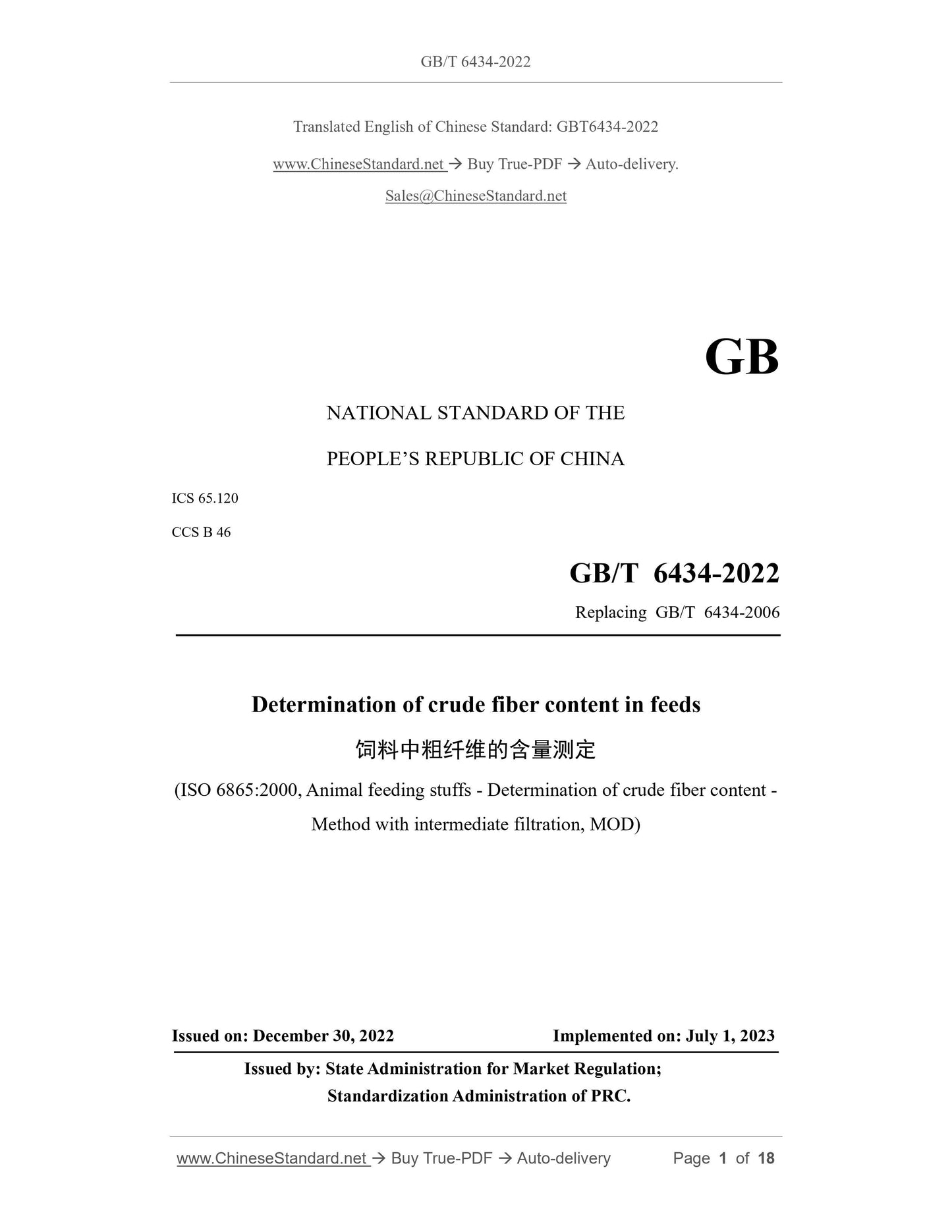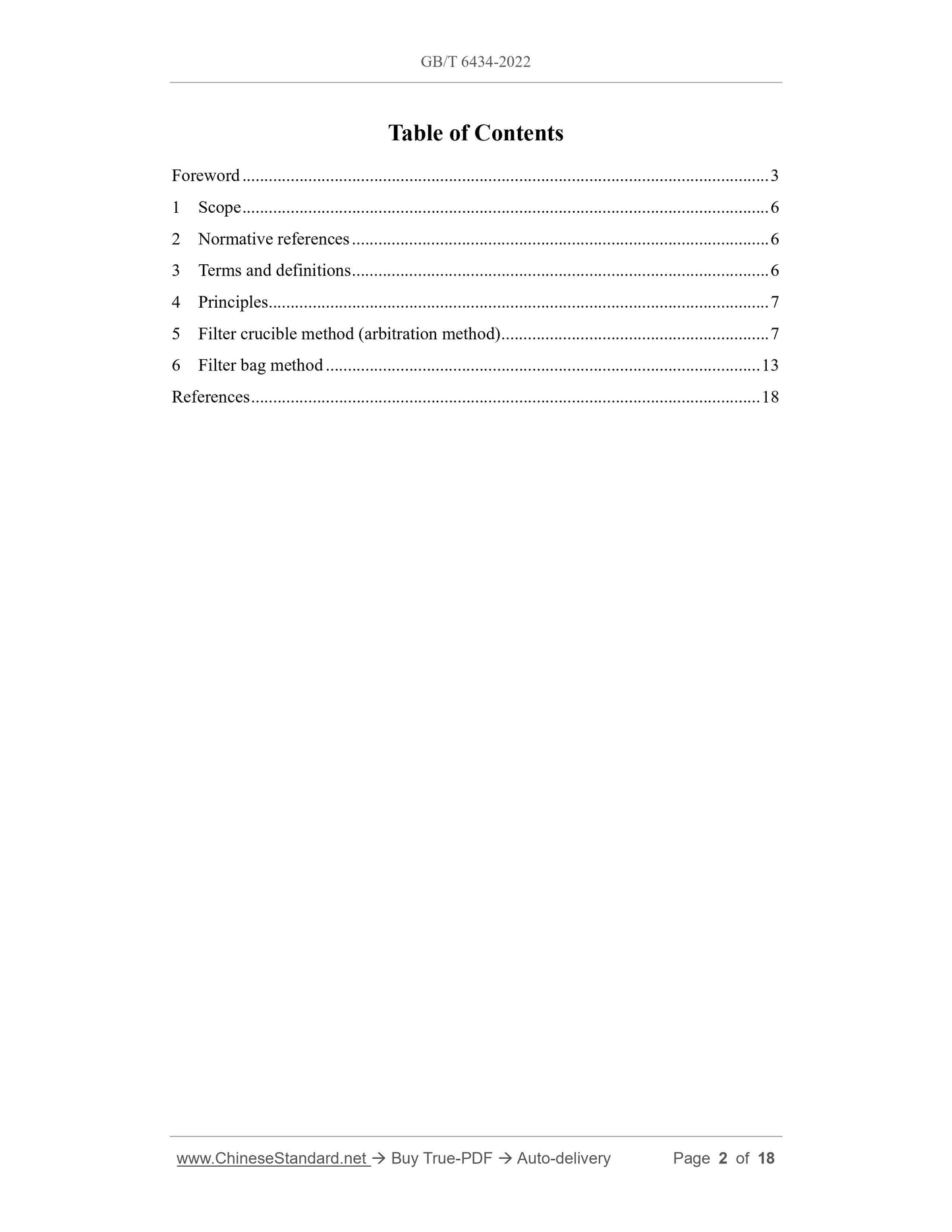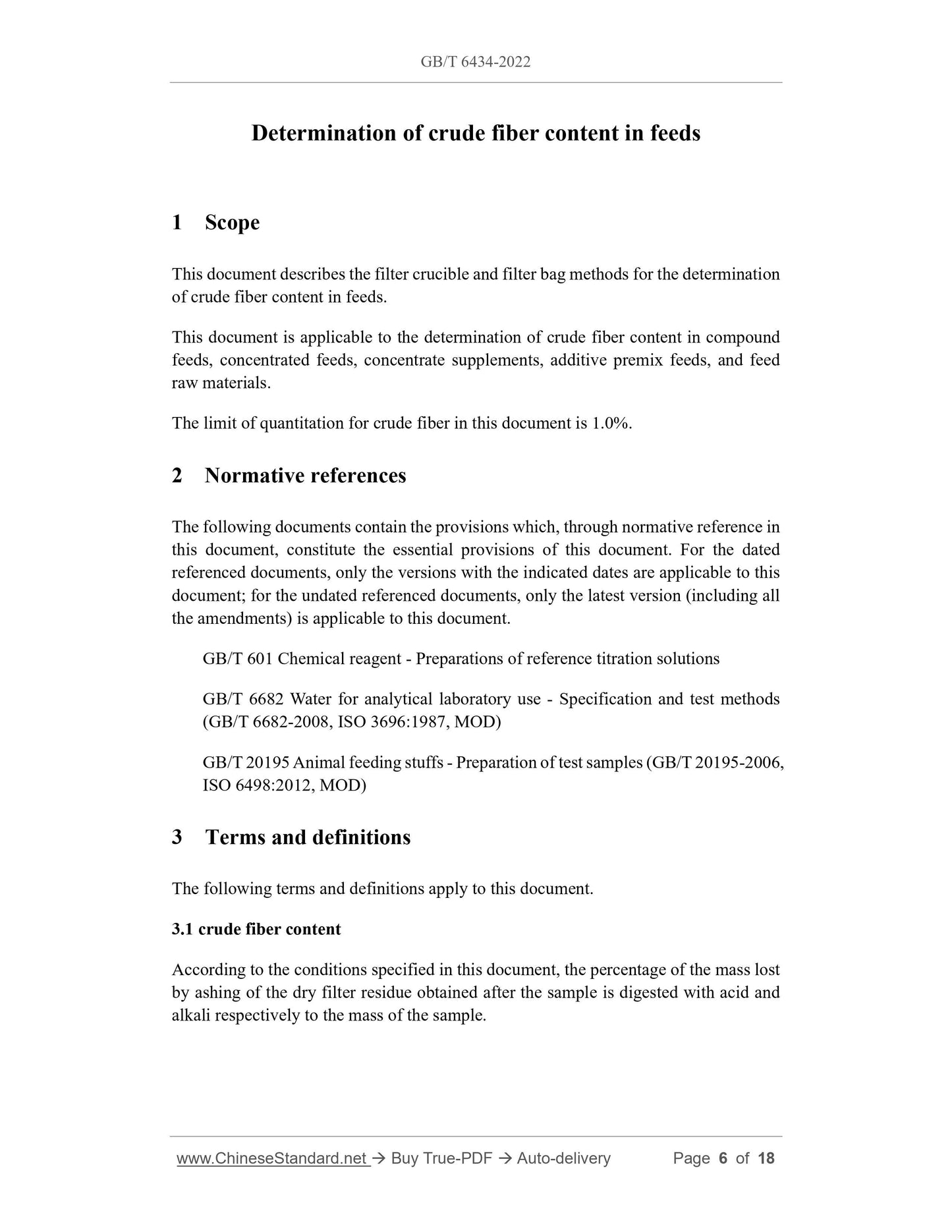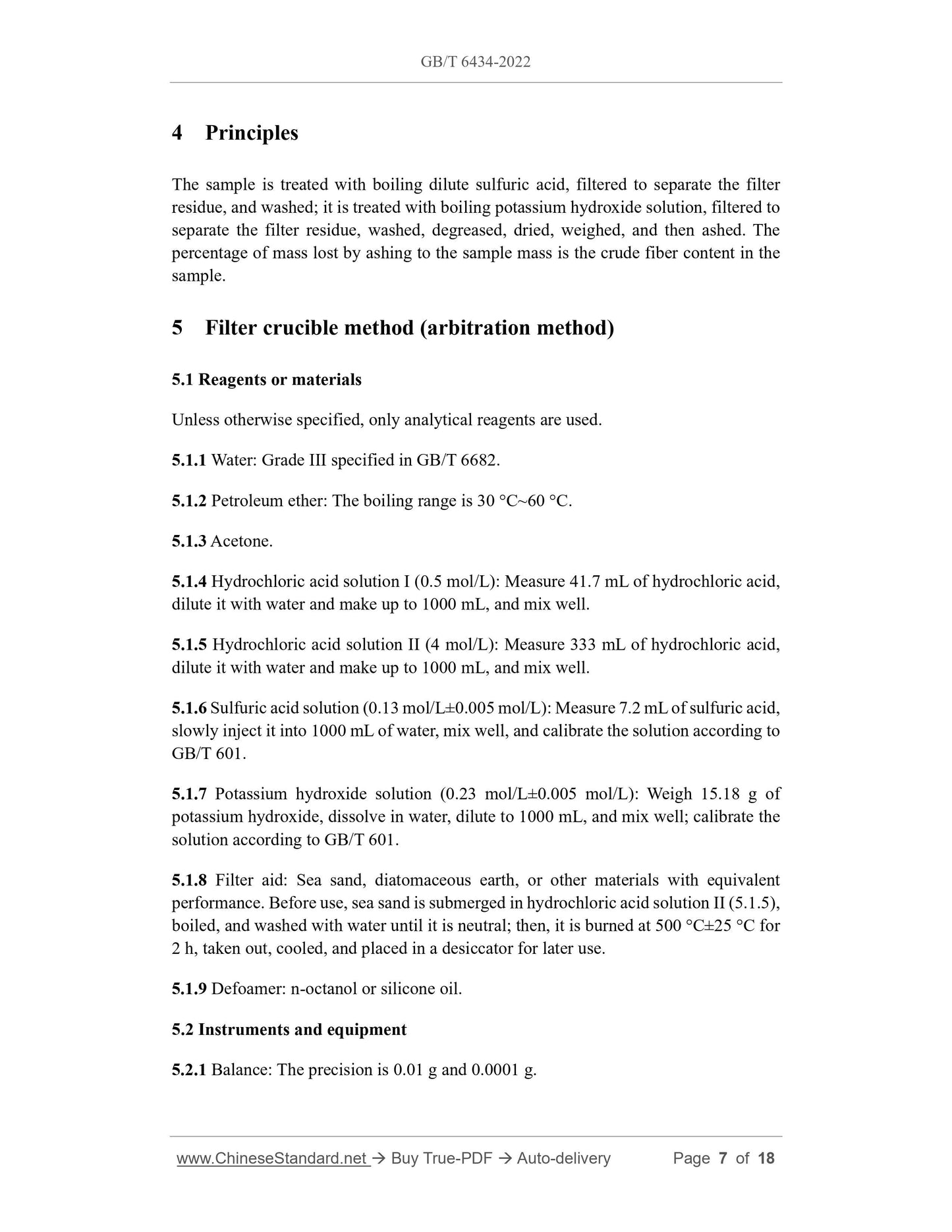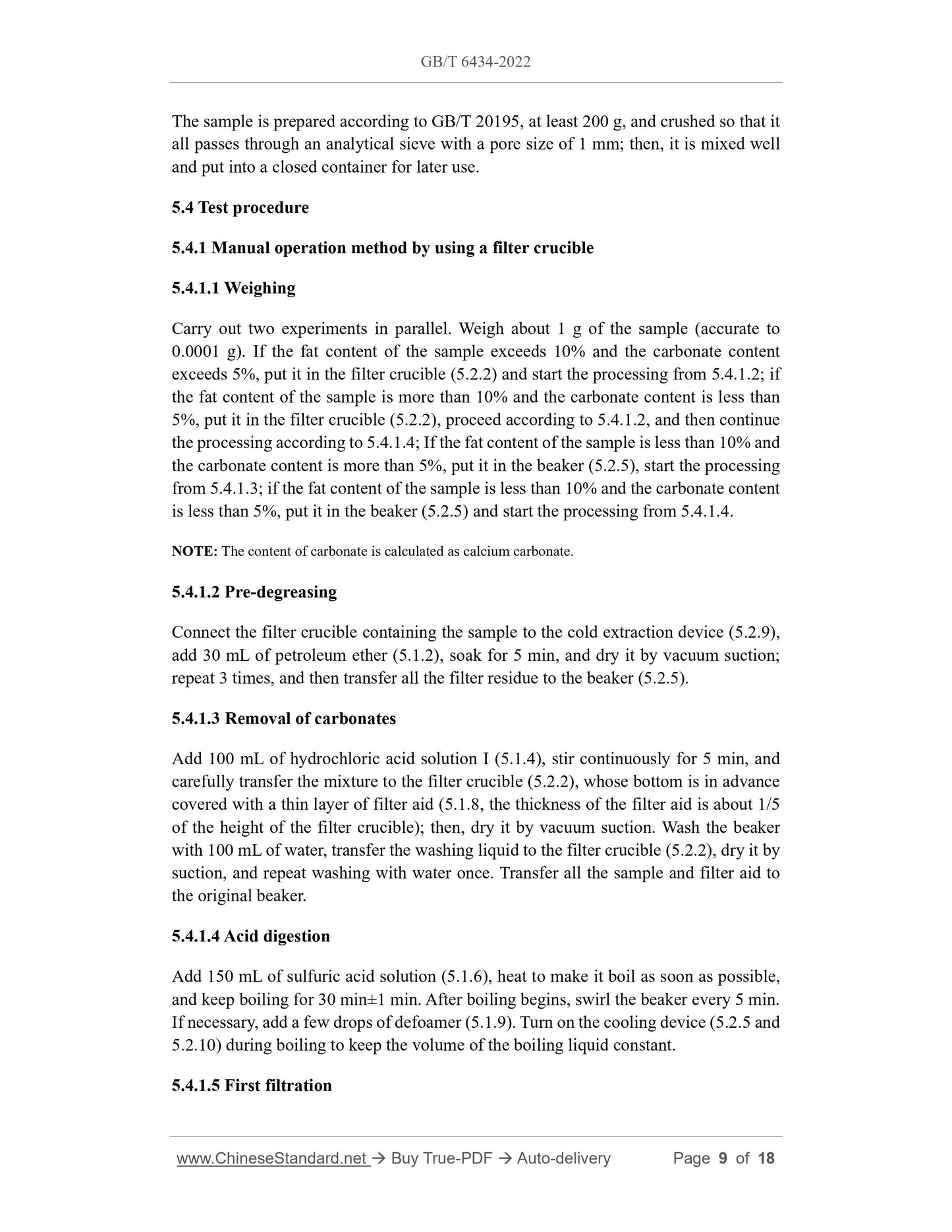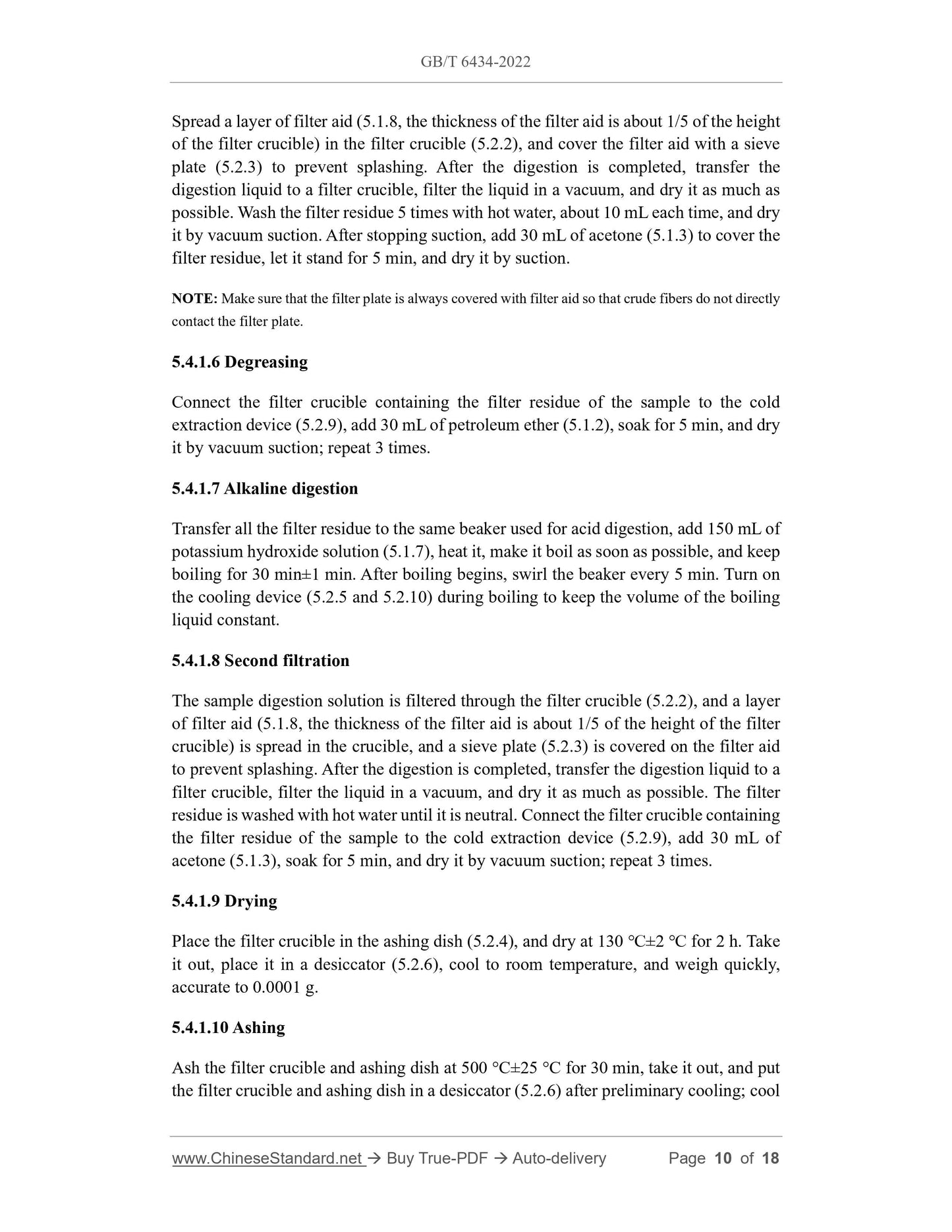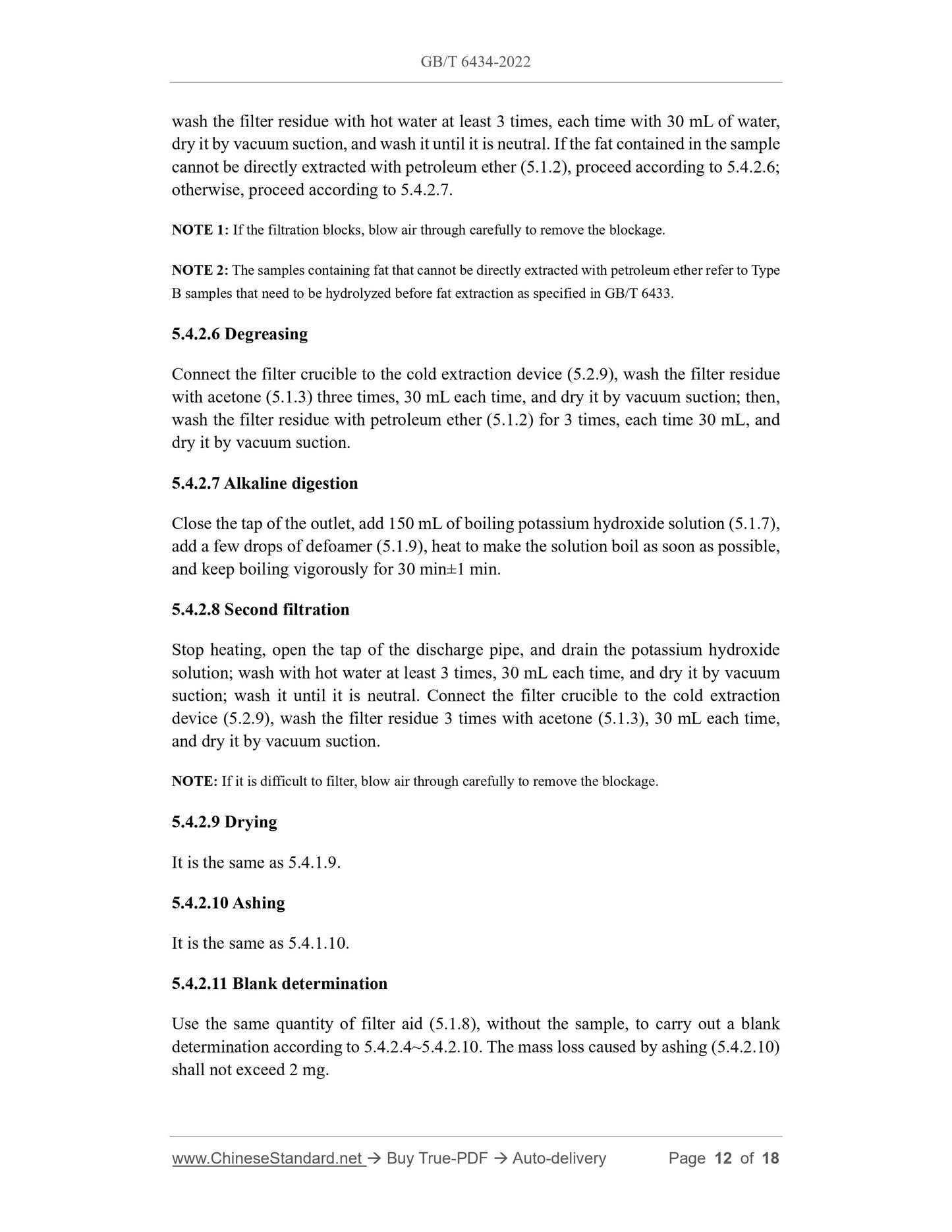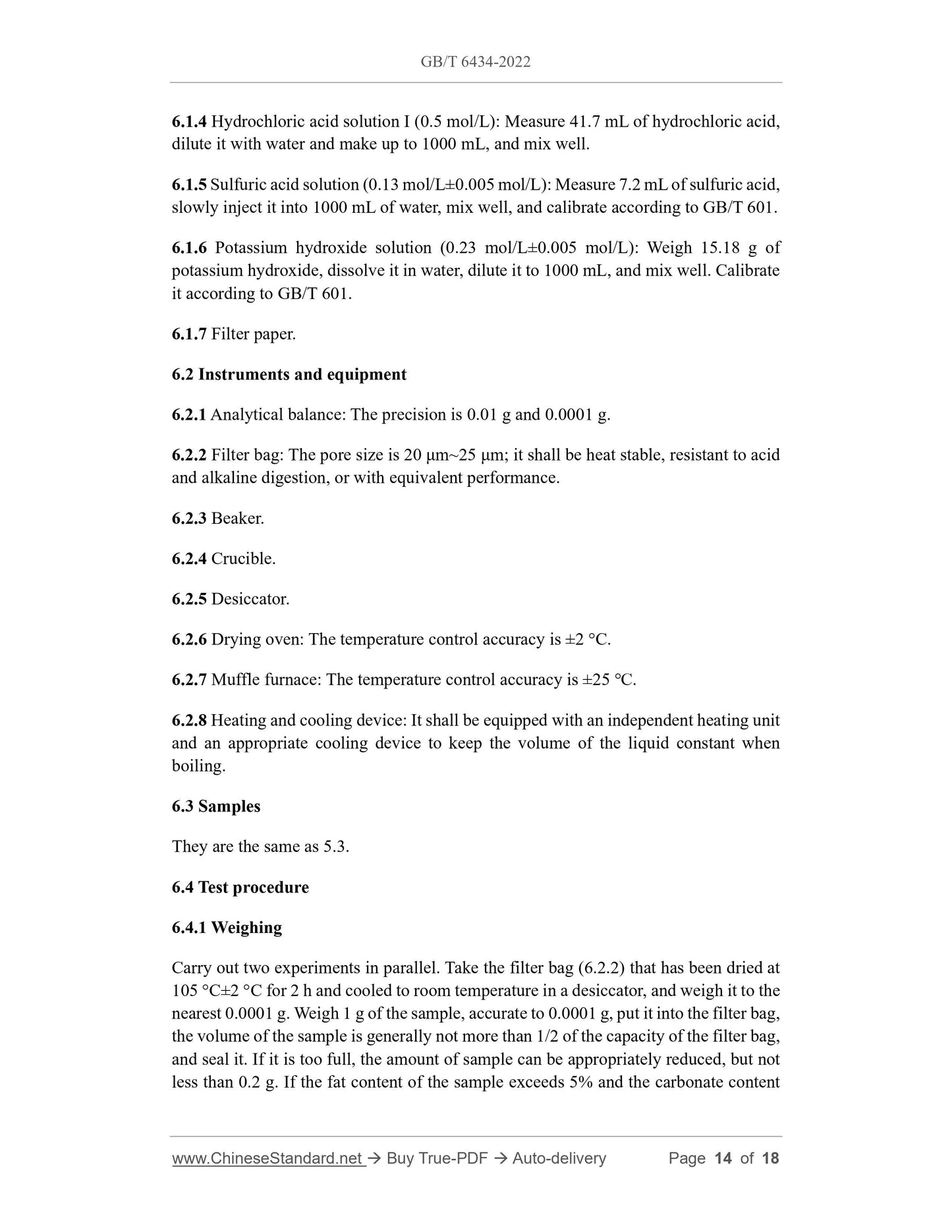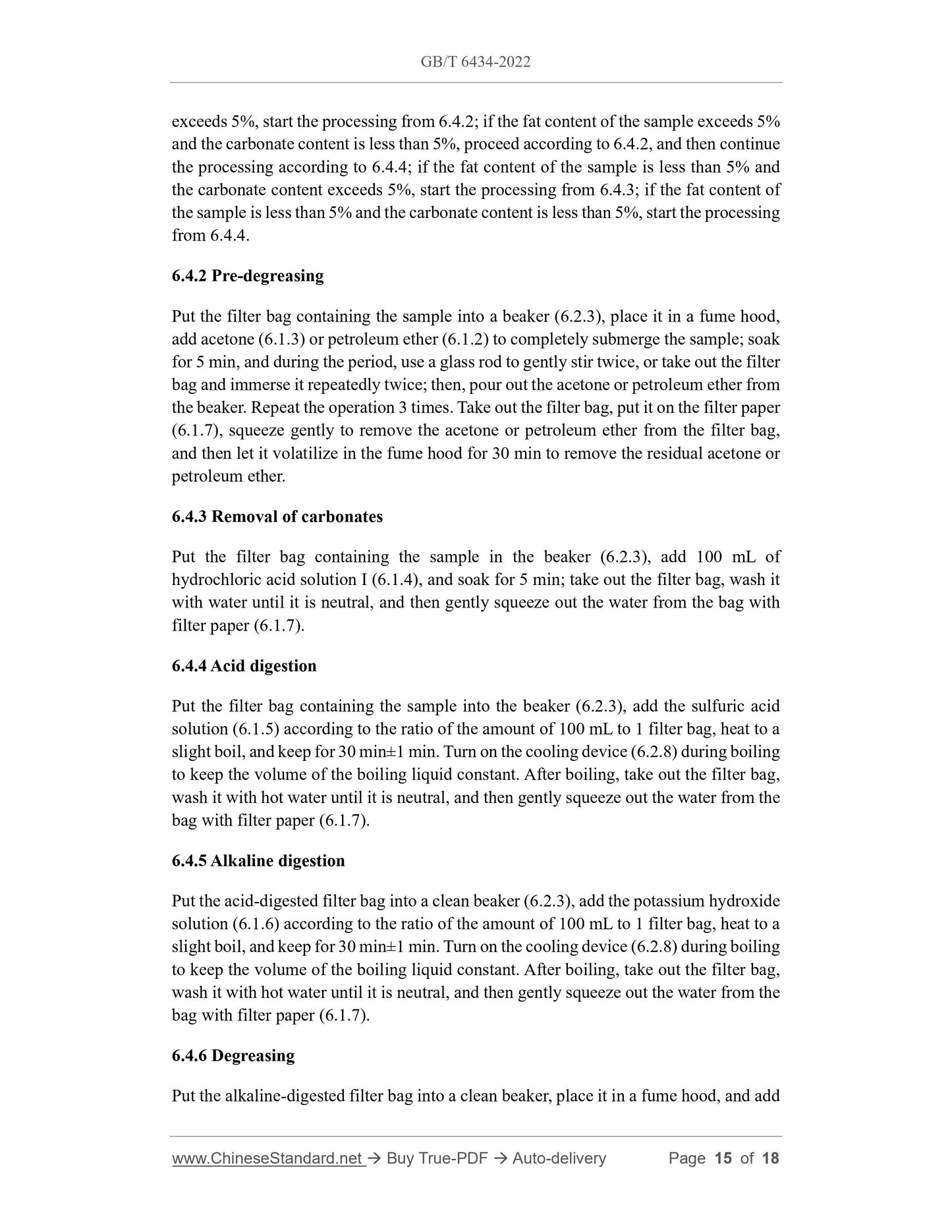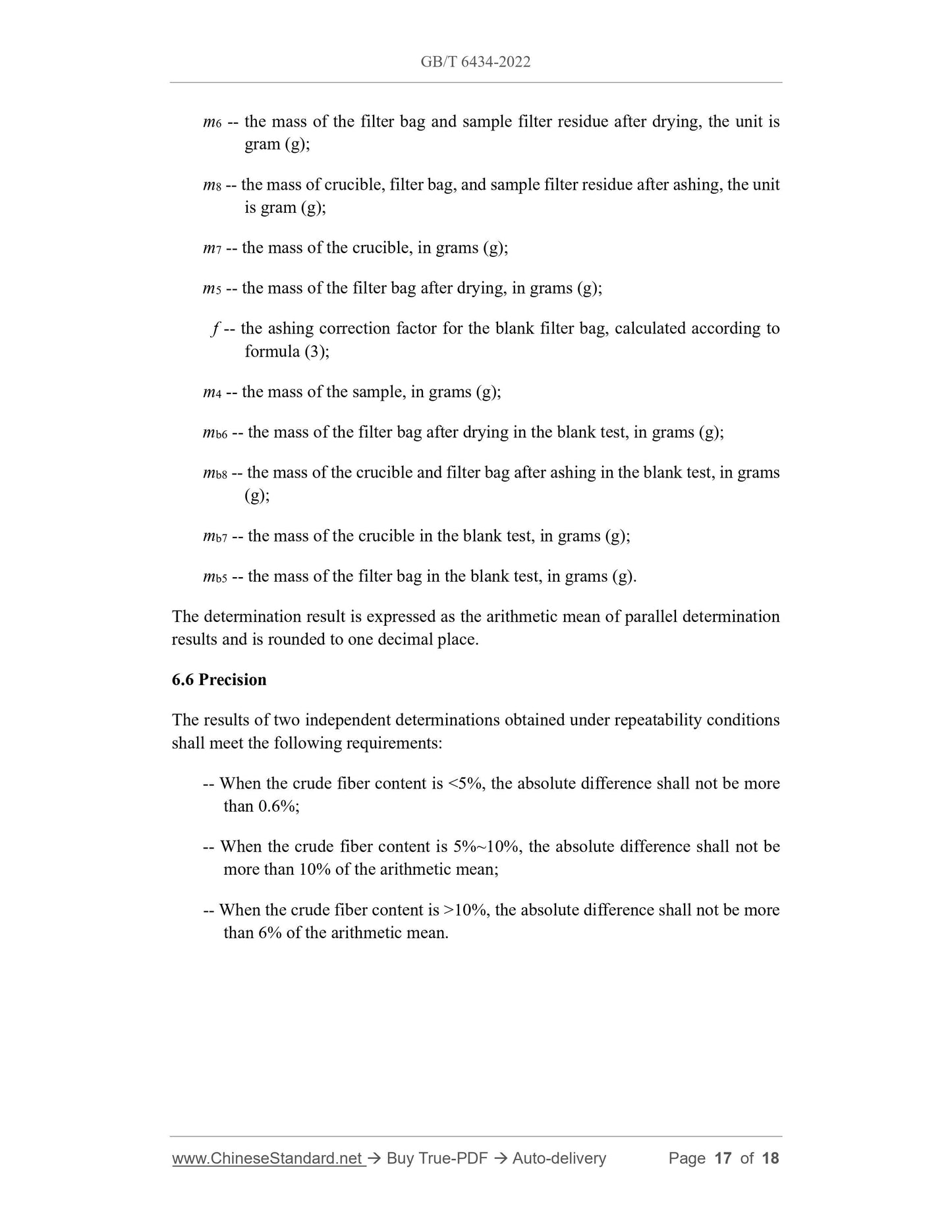1
/
of
10
www.ChineseStandard.us -- Field Test Asia Pte. Ltd.
GB/T 6434-2022 English PDF (GB/T6434-2022)
GB/T 6434-2022 English PDF (GB/T6434-2022)
Regular price
$185.00
Regular price
Sale price
$185.00
Unit price
/
per
Shipping calculated at checkout.
Couldn't load pickup availability
GB/T 6434-2022: Determination of crude fiber content in feeds
Delivery: 9 seconds. Download (and Email) true-PDF + Invoice.Get Quotation: Click GB/T 6434-2022 (Self-service in 1-minute)
Newer / historical versions: GB/T 6434-2022
Preview True-PDF
Scope
This document describes the filter crucible and filter bag methods for the determinationof crude fiber content in feeds.
Basic Data
| Standard ID | GB/T 6434-2022 (GB/T6434-2022) |
| Description (Translated English) | Determination of crude fiber content in feeds |
| Sector / Industry | National Standard (Recommended) |
| Classification of Chinese Standard | B46 |
| Classification of International Standard | 65.120 |
| Word Count Estimation | 14,140 |
| Date of Issue | 2022-12-30 |
| Date of Implementation | 2023-07-01 |
| Older Standard (superseded by this standard) | GB/T 6434-2006 |
| Issuing agency(ies) | State Administration for Market Regulation, China National Standardization Administration |
Share
